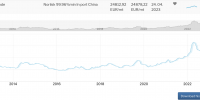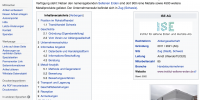By Bernd Schlupeck
Scientists in Saxony have developed a chemical process to inexpensively extract rare earths from the phosphor slurries of lamp production and phosphor powders of old tubes. Rare earths are not uncommon but often expensive raw materials used in almost all high technology products.
"So, this is now the stirred tank where the phosphors are processed."
Peter Fröhlich, chemist at the Bergakademie Freiberg, points to a glass 20 liter kettle. The heart of the treatment reactor is clamped in an aluminum framework that extends from the floor to the ceiling of the laboratory. In the boiler, hoses end with two glass containers hanging above the kettle containing hydrochloric acid. On the boiler on it sits a stirrer with engine. For the treatment, luminescent sludges from the production of neon tubes are poured into the reactor and hydrochloric acid is gradually added from the funnels. Cheerfully:
“The whole thing is stirred intensely and during this process the rare earths are released, which means they go into solution. This is followed by a multi-stage process in which we can extract the rare earths very pure. "
What the scientist sums up so briefly and concisely is the result of two years of research and goes by the name SepSELSA - the separation of rare earths from fluorescent waste requiring disposal in Saxony. The aim of the process: to get the coveted metals out of production waste and fluorescent powders from old neon tubes in as few steps as possible, as pure and inexpensive as possible. First and foremost, the researchers looked at the rare earths in production waste. They come as luminous sludge from the project partner Narva Lichtquellen and contain up to 22 percent rare earths: The researchers are primarily interested in the yttrium, which is responsible for the color green, and the europium, which is responsible for the color red. To find out, the scientists take advantage of the fact that different substances dissolve differently in acid.
“You can imagine it like that,” explains Martin Bertau, professor at the Institute for Technical Chemistry. “If you add table salt to water, the salt dissolves. If you put a phosphor in water, nothing happens at first. If you now add an acid - fluorescent material is a multicomponent mixture - then this acid, like water and table salt, can attack parts of this phosphor mixture and then dissolves precisely these parts. And the non-soluble components are filtered off. "
The phosphor mixture is then further separated and dried. In the end, yttrium and europium are present in an oxygen compound that goes back to production for new fluorescent tubes. Sounds easy. But:
“The problem is always when I have an acid; Acid costs a lot of money in the chemical industry. Then I have to see to it that I handle the acid like a precious commodity. That is why we have developed a process in which we can recover the acid at its original strength. "
That's the kicker, if you will. Hydrochloric acid that has not reacted with a phosphor is then filtered off through a membrane and poured back into the glass funnel for further treatment. That saves a lot of money - a ton of pure hydrochloric acid costs around 160 euros - and makes the process economical. A large-scale facility is now running at the project partner FNE Entsorgungsdienste Freiberg. Up to 150 kilograms of fluorescent sludge are processed here every day.
Source: http://www.deutschlandfunk.de/seltene-erden-begehrte-metalle-aus-alten-lampen.676.de.html?dram:article_id=319654



